Hey everyone! We are out with our first real mobile comparison. Redmi Note 5 vs Zenfone Max Pro M1! We will conduct the review in two parts. This one is the first – only a basic comparison. A second, more detailed review will be out very soon. Make sure you subscribe to us if you want to be notified when it’s out.
So, Redmi Note 5, the successor of the best-selling smartphone in India of the year 2017 and Zenfone Max Pro M1 (weird naming), the successor of the not-so-commercially-successful-yet-a-good-phone Asus Zenfone 3S Max. More on this in the other review. Both the Redmi and the Max series are the best-sellers for their respective companies, so it should be an interesting battle.
Just so you know, Asus sent us both the review units. One would expect the Redmi Note 5 Pro to be pit against the Asus Zenfone Max Pro M1, given both of them flaunt dual cams. Nonetheless, these two phones are similarly priced and still make for a good comparison. Here’s a run-down in each department,
Table of Contents
Comparison: Redmi Note 5 vs Asus Zenfone Max Pro M1
In the box
Redmi Note 5:
- Redmi Note 5 Device [Black]
- Ultra-Slim Case
- USB Cable
- Power Adapter
- SIM Ejector Tool
- Warranty card and paperwork
Asus Zenfone Max Pro M1:
- Asus Zenfone Max Pro M1 [Black]
- Max-Box
- USB Cable
- Power Adapter (Output: 5V 2A 10W)
- SIM Ejector Tool
- Warranty card and paperwork
Note: We compare the 3GB RAM – 32GB Storage variants of both Redmi Note 5 and Asus Zenfone Max Pro M1. We’ve used both the phones for about ten days as our daily driver, having installed apps which we use on a daily basis.
Build – Looks & Design
Both phones have generic, not-so-awesome designs which is expected in this price where the Realme series are an exception. Redmi Note 5 has almost same design as it is predecessor Redmi Note 4 and the Asus Zenfone Max Pro design looks more routine than the Redmi Note 5 and has softened corners than the Note 5. Let’s have a peek into their specs before we talk more.
| Specification | Xiaomi Redmi Note 5 | Asus Zenfone Max Pro M1 |
|---|---|---|
| Screen | 5.99-inch Full HD+ Display Corning Gorilla Glass 403 ppi 2.5D Curved Glass |
5.99-inch Full HD+ Display Not a Gorilla Glass, but has the Oleophobic coating 403 ppi 2.5D Curved Glass |
| Weight | 180 grams | 180 grams |
| Dimensions
Length x Height x Thickness |
158.5 x 75.45mm x 8.05mm | 159mm x 76mm x 8.46mm |
Both devices have a metal finishing, with the Max Pro having a little plastic to the top and bottom of the phone. The Max Pro back is a heavy fingerprint magnet. On the other hand, the Note 5 also has the same finishing but thanks to the case that came with the box, it is better. The Redmi Note 5 is slippery and is recommended to be used with a case. Both devices have almost same dimensions except that the Max Pro is a little thicker than the Note 5 due to its mammoth 5000 mAh battery. Both devices have a fingerprint sensor to their back. To the rear, Zenfone has dual cam setup to the top left and Xiaomi has the main camera to its center. And though they offer 5.99-inch display, thanks to their 18:9 ratio displays, they don’t seem large and are easy to carry. Both phones On my first impression, the Note 5’s display looked more vibrant and better than the Max Pro.
Fun fact, both phones sports single speakers to the bottom of their devices. I thought Note 5 sports dual speakers after looking to the bottom which sports vents to either side of the USB port. But later found out that one among them is a microphone and one is a speaker.
In a nutshell, both are devices are almost the same and offer nothing special.
Performance
Both devices are great performers given their chipsets. Snapdragon 625 for Note 5 which is same as its predecessor Note 4, and the new Snapdragon 636 in the Zenfone Max Pro. Zenfone Max Pro not only has a better processor but also has a better GPU than Note 5, Adreno 509 over Adreno 506.
| Specification | Xiaomi Redmi Note 5 | Asus Zenfone Max Pro M1 |
|---|---|---|
| Processor |
Qualcomm Snapdragon 625 Octa Core 2 GHz |
Qualcomm Snapdragon 636 Octa Core 1.8 GHz |
| GPU | Adreno 506 | Adreno 509 |
| RAM | 3 GB | 3 GB |
| Storage | 32 GB (23.77GB usable) | 32 GB (23.24 GB usable) , dedicated SD Card Slot |
| Sensors | Accelerometer Sensor, E-Compass, Proximity Sensor, Ambient Light Sensor, Rear Fingerprint Sensor, Gyroscope, IR Blaster | Accelerometer Sensor, E-Compass, Proximity Sensor, Ambient Light Sensor, Fingerprint Sensor, Gyroscope |
During our review period, I played games like PUBG on both the devices. The Zenfone Max Pro M1 seemed to be far better than Redmi Note 5. The Zenfone selects medium graphics mode by default and low graphics mode in Redmi Note 5. Neither of the devices heated up or lagged. Zenfone Max was able to run with medium graphics without any lag but in the case of Note 5, it wasn’t that smooth. Apart from gaming, I felt the Zenfone Max Pro superior to Note 5 in-app switching. My WhatsApp is a little heavy with 2GB of backup and with an active friends group. I never felt any difficulty in the Zenfone while switching but the Note 5 struggled.
RAM management is pretty good in both of the devices. Regarding storage, however, Asus has the edge over Note 5 thanks to dedicated SD Card slot (expandable up to 2TB).
The Zenfone Max Pro is exceptionally good in means of connectivity. The call reception and mobile data worked great even in places with poor network signal. Zenfone Max Pro supports dual 4G and dual VoLTE which the Redmi Note 5 doesn’t. I have had issues with Redmi Note 5 with VoLTE initially during the review period. but a quick reboot helped and it worked seamlessly after that.
Talking about the sensors, Note 5 sports the IR Blaster which the Max Pro doesn’t. The fingerprint sensor performance of Max Pro is slow compared with the Note 5.
Performance wise, the Zenfone Max Pro is superior to Redmi Note 5 both on and off the paper.
P.S: The MaxBox included in the package is made of strong cardboard which improves sound clarity and makes it louder. In day to day life, I don’t think anyone will use it daily ?♂️.
Software
Asus Zenfone comes with ZenUI on top of Android Oreo, which Asus claims is Pure Android with some Asus additions. It added few additional features like gestures and added, replaced few default applications with its own ( Calculator, Voice Recorder, and FM Radio). Note 5, on the other hand, comes with MIUI 9 on top of Android Nougat with many apps and customization.
| Specification | Xiaomi Redmi Note 5 | Asus Zenfone Max Pro M1 |
|---|---|---|
| OS |
Android Nougat 7.1.2 |
Android Oreo 8.1 |
| UI | MIUI 9 | ZenUI (yet mostly Stock Android) |
During our review period, both devices got updates which are almost routine for all vendors these days. Initially, the Zenfone didn’t even have a default Gallery app, which used Google Photos for image previews. During the end of my review timeline, I’ve received the update which had Snapdragon Gallery which showed image previews. However, it is not accessible from the App Drawer. Note 5’s MIUI 9 is almost a year ago still running Android Nougat. It is almost flawless and works great. Xiaomi’s major Android Oreo update with MIUI 10 will also be rolling out very soon. There are a few bugs in the Note 5, though, which we will get to later.
We prefer Zenfone Max Pro M1 in this category although we’re not fans of Stock Android. That said, updates are faster on Stock Android devices than others. Xiaomi being lazy in giving updates to its phones further validates our preference. If you don’t mind about latest Android features and all you care is just a stable software with features, the Note 5 is yours.
Camera
I will keep this section simple and straightforward. The Max Pro has a dual cam while Note 5 doesn’t. This doesn’t make much difference until Portrait mode comes into the picture, though. Both devices exhibit great rear camera performance. The Note 5 has blazing fast focusing than the Max Pro and the photos shot on Max Pro are more natural than the Note 5. Bokeh effect looks great on the Max Pro.
| Specification | Xiaomi Redmi Note 5 | Asus Zenfone Max Pro M1 |
|---|---|---|
| Rear Camera | 12 MP, 1.25μm large pixel 5-element lens, ƒ/2.2 aperture, Dual LED flash |
13 MP+5 MP, (Dual Camera) 1.12μm, f/2.2 aperture, Phase-detection autofocus, LED flash |
| Front Camera | 5 MP | 8 MP,1.0μm, f/2.2 aperture |
| Video Recording | Supports 1080p HD Recording | Supports 4K UHD Recording |
| Flash | Rear and Front | Rear and Front |
Front camera of Note 5 is terrific compared to Max Pro. Max Pro which adds reddish tint while shooting selfies which gets really annoying after a while. Max Pro comes with Snapdragon’s default camera app which has great features yet nowhere near the Note 5 when compared for selfies.
Here are a few shots from the rear camera.
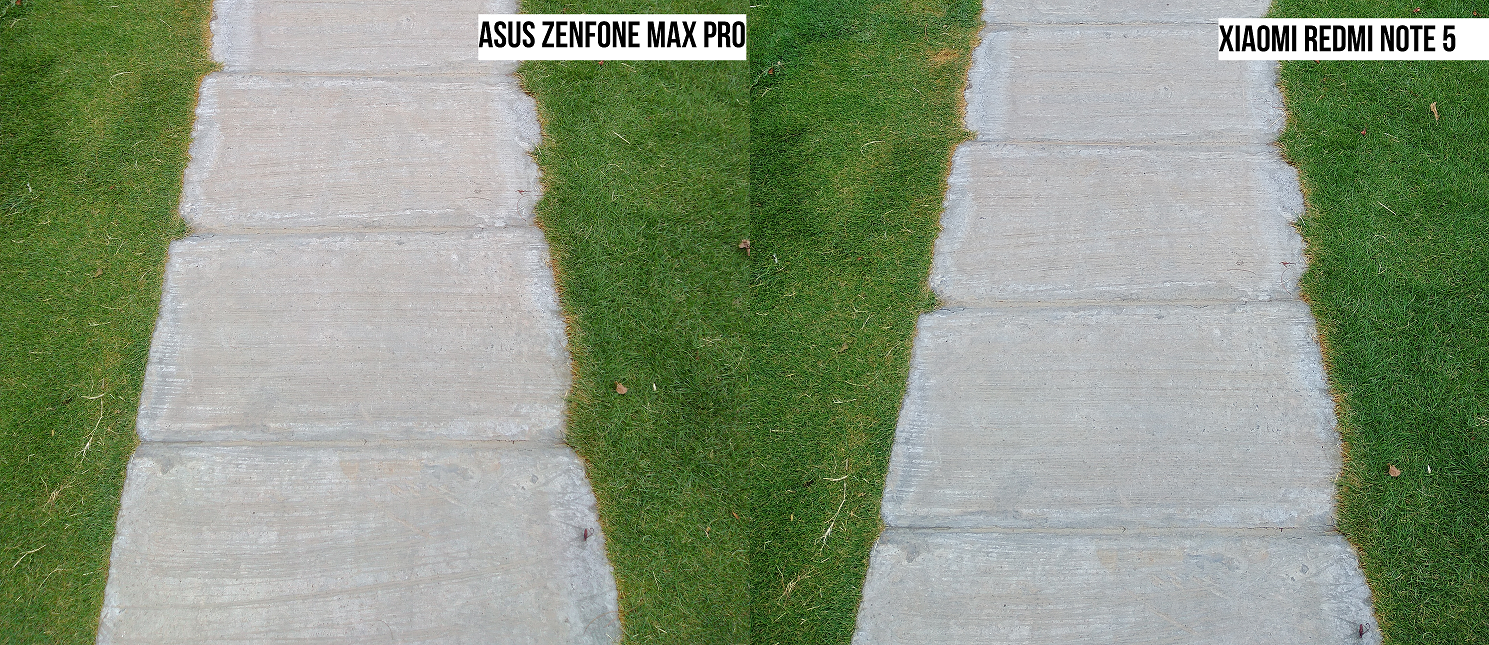
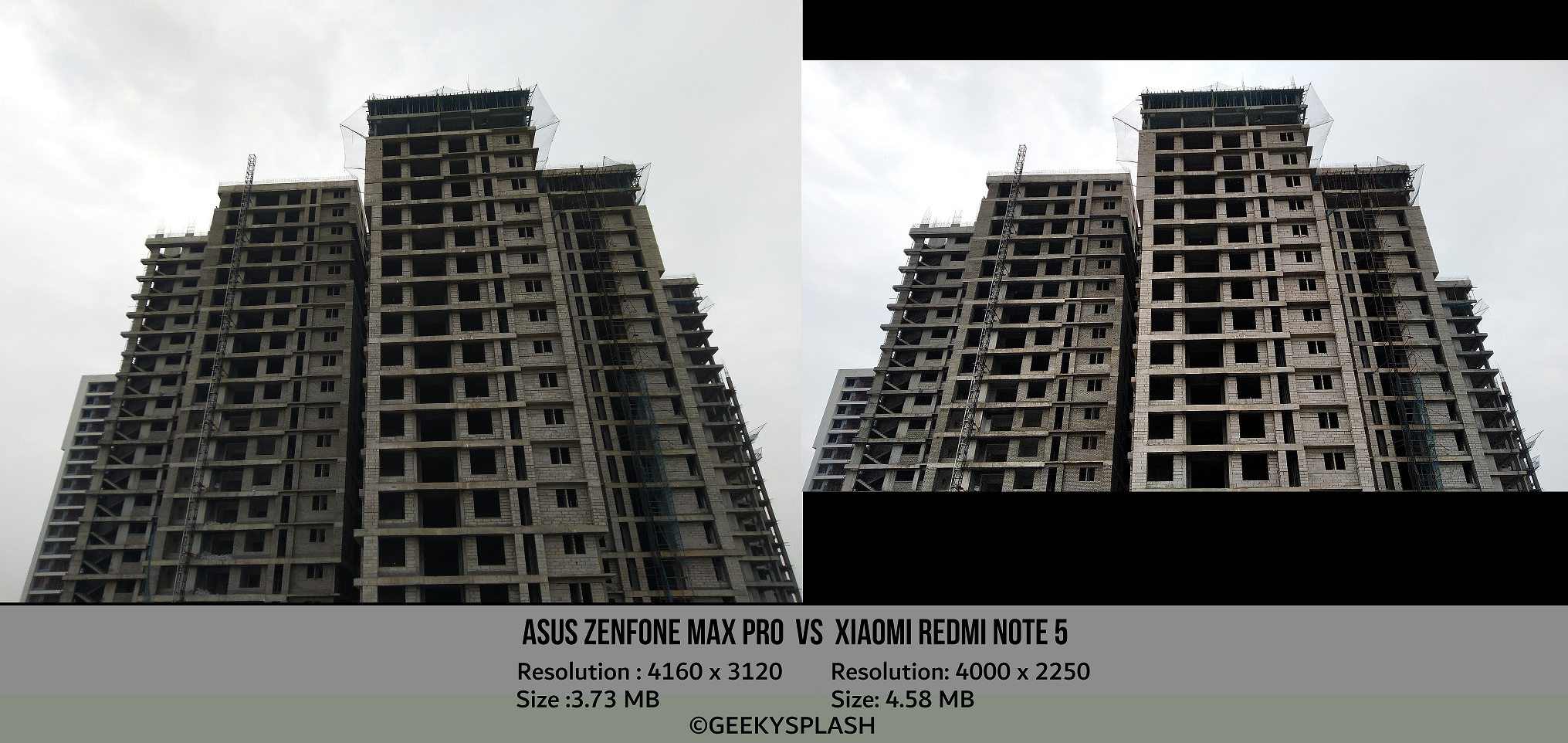
You can shoot 4k Videos using the Max Pro yet it lacks EIS and OIS (stabilizations), hence videos are shaky.
In this department, Redmi Note 5 is a clear winner. At least just on basis of its front camera.
P.S: Asus just rolled out an update which majorly addressed the Camera issues and people claim its good. But we don’t have the device as the update rolled after our review timeline.
Battery
Though Asus sports a mammoth 5000 mAh battery which is, of course, higher than the Note 5, the Note 5 still gives great battery backup as the Max Pro. With heavy usage, Max Pro gives you 8 hours of Screen on Time and Note 5 gives up to 7 hours on an average. Both devices lasted for more than a day and we loved it.
| Specification | Xiaomi Redmi Note 5 | Asus Zenfone Max Pro M1 |
|---|---|---|
| Battery |
4000 mAh |
5000 mAh |
What disappointed us is Xiaomi not offering a QuickCharger though the device is capable of. On the other side, Asus offers a 10W Charger calling it ‘Fast charging’ which technically is not, yet both devices take around 2 and half hours for a full charge. Max Pro still takes around 2 and half hours for a full charge so their 10W charger isn’t an issue.
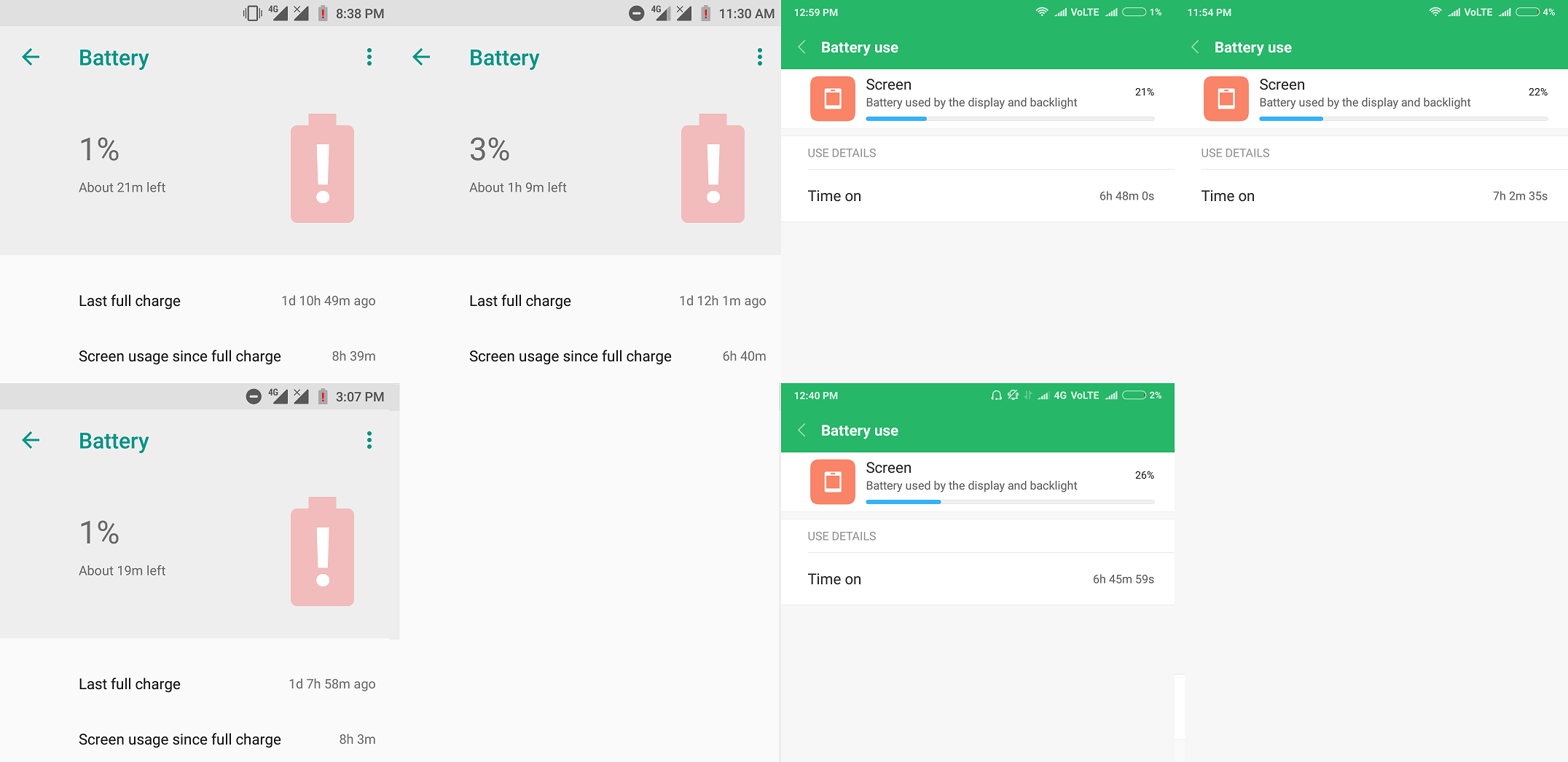
I say Asus just has a little advantage than the Note 5 with its mammoth battery and which I believe will offer more battery backup even in a long run.
Finally,
Redmi Note 5 priced at Rs.9999/- and Zenfone Max Pro priced at 10,999/-, both of them are well-rounded phones and do pretty well in almost all departments. That being said, we would have to give an edge to the Zenfone Max Pro on account of its dedicated SD card slot and a slightly better processor. Though Note 5 is decent at its price, we will still recommend you to invest a thousand and go for Max Pro. Nonetheless, both the phones offer great value for the money and will do great for their company. It really comes down to what you are looking for from a phone – camera vs performance seems to be the call. You cannot really go wrong with either phone. But as I told, with the recent update we still need to know Asus Zenfone Max Pro had improved its camera. Yes, Realme 1 series is a great offering too at the given price segment. We will try to get a review unit and try the comparison. Do let us know in the comments section below if you want us to cover something specific in the longer review, or want us to compare other phones.

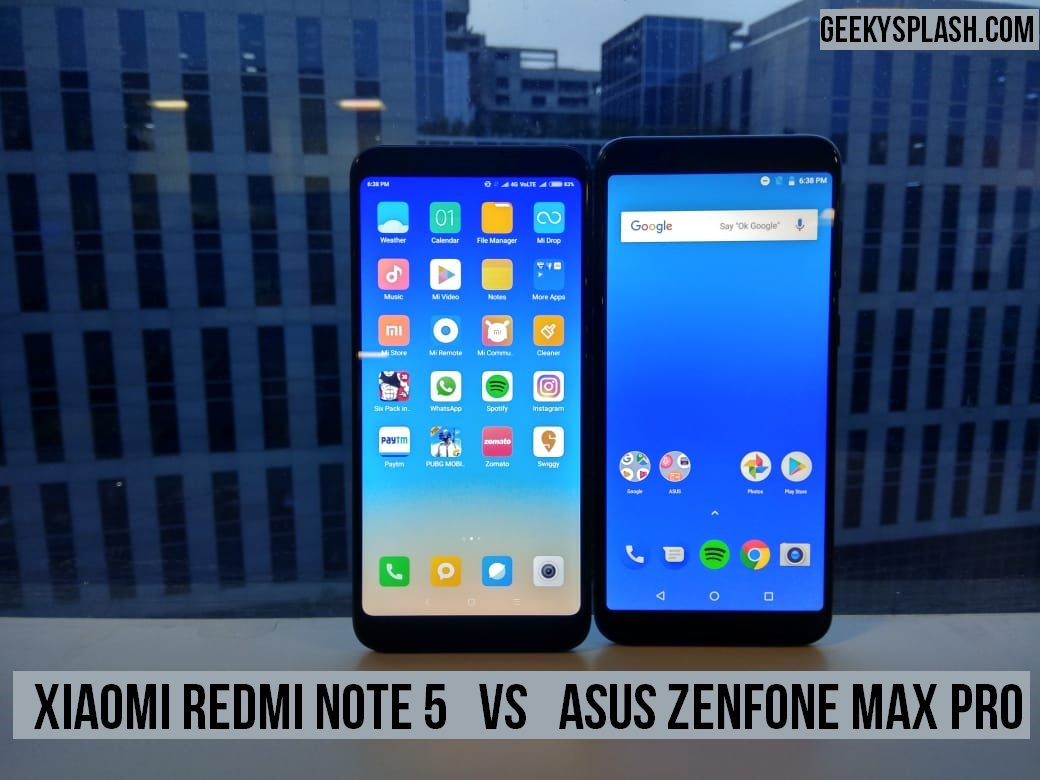
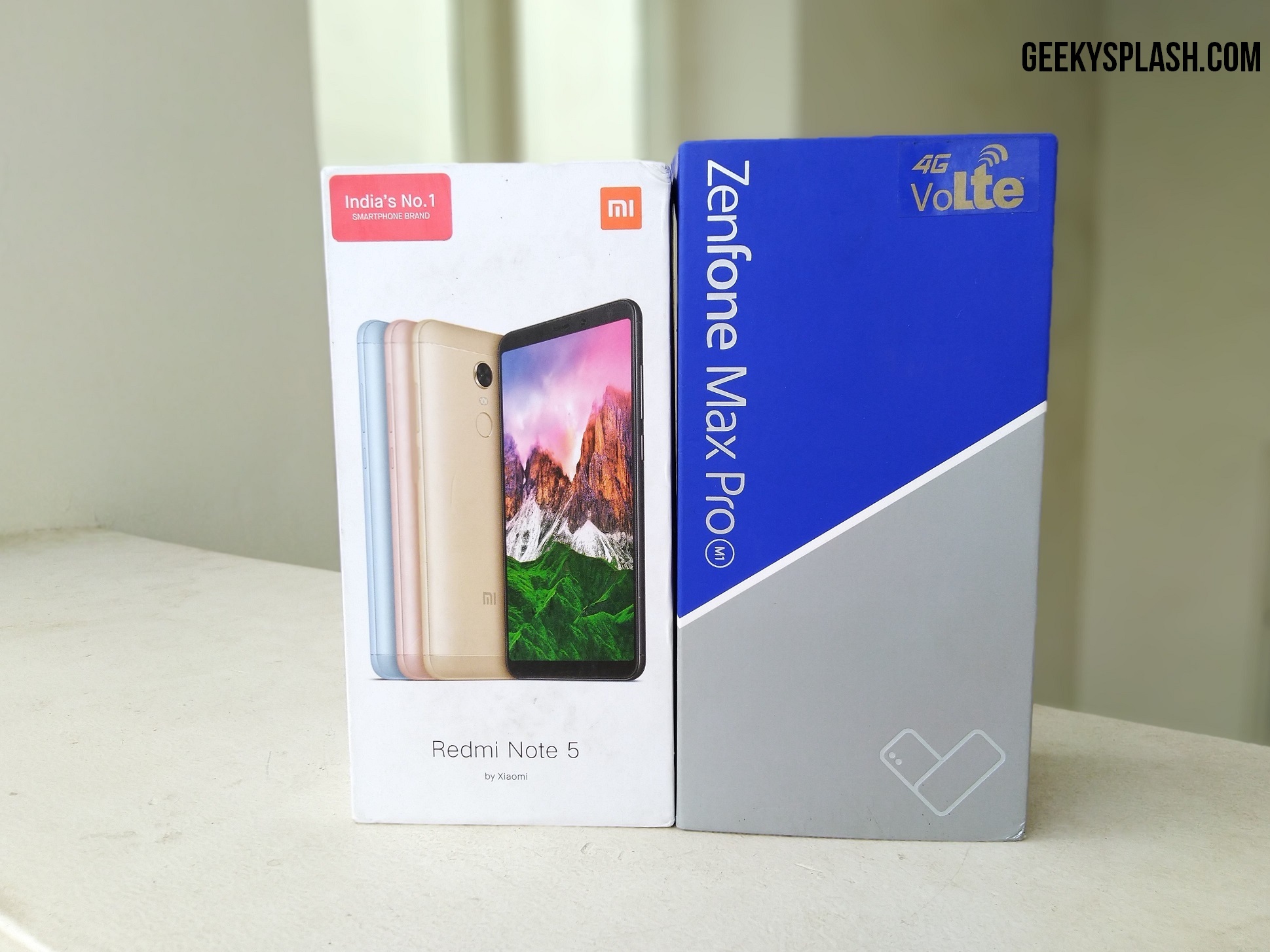
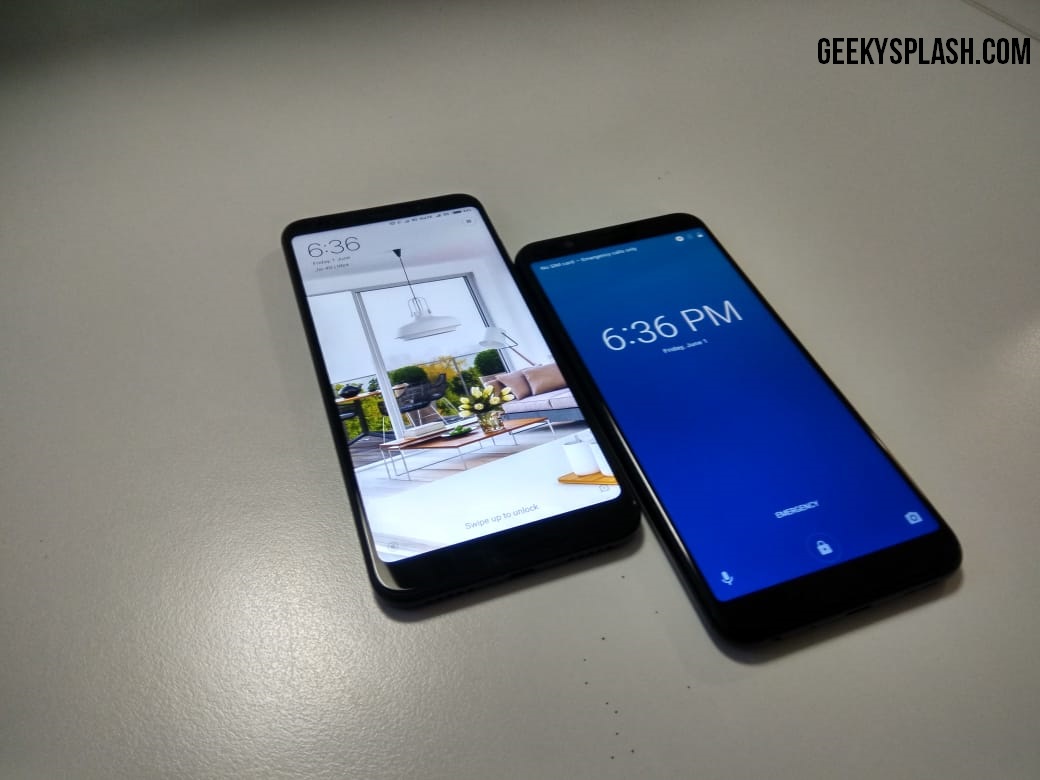
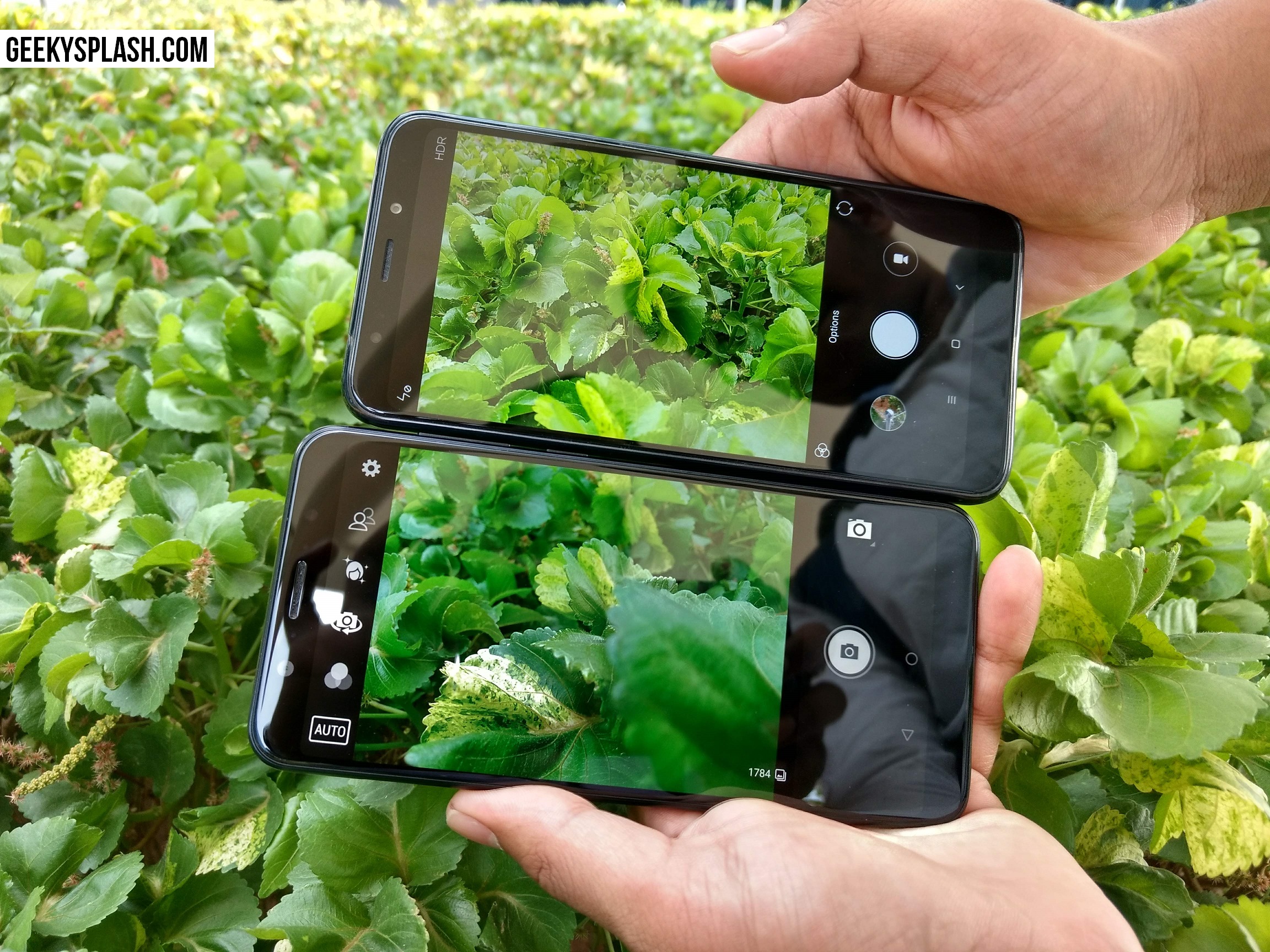
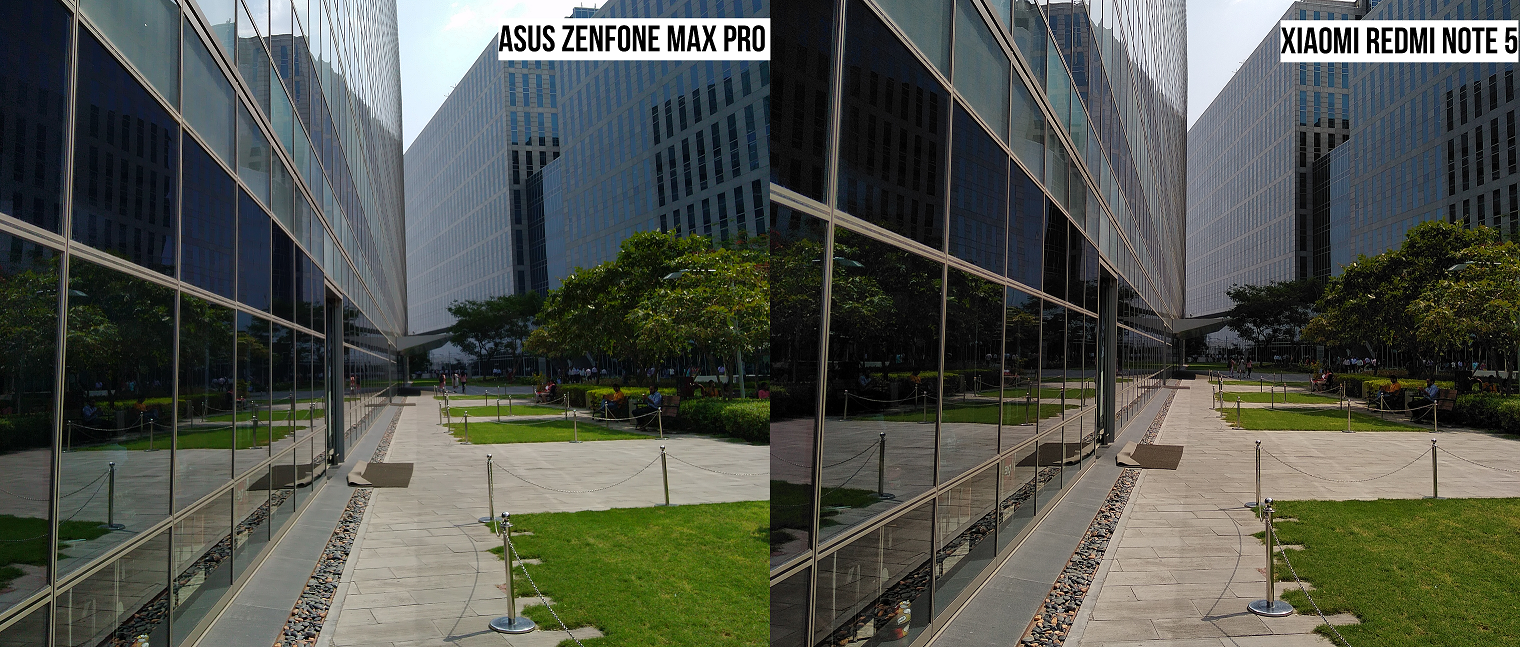
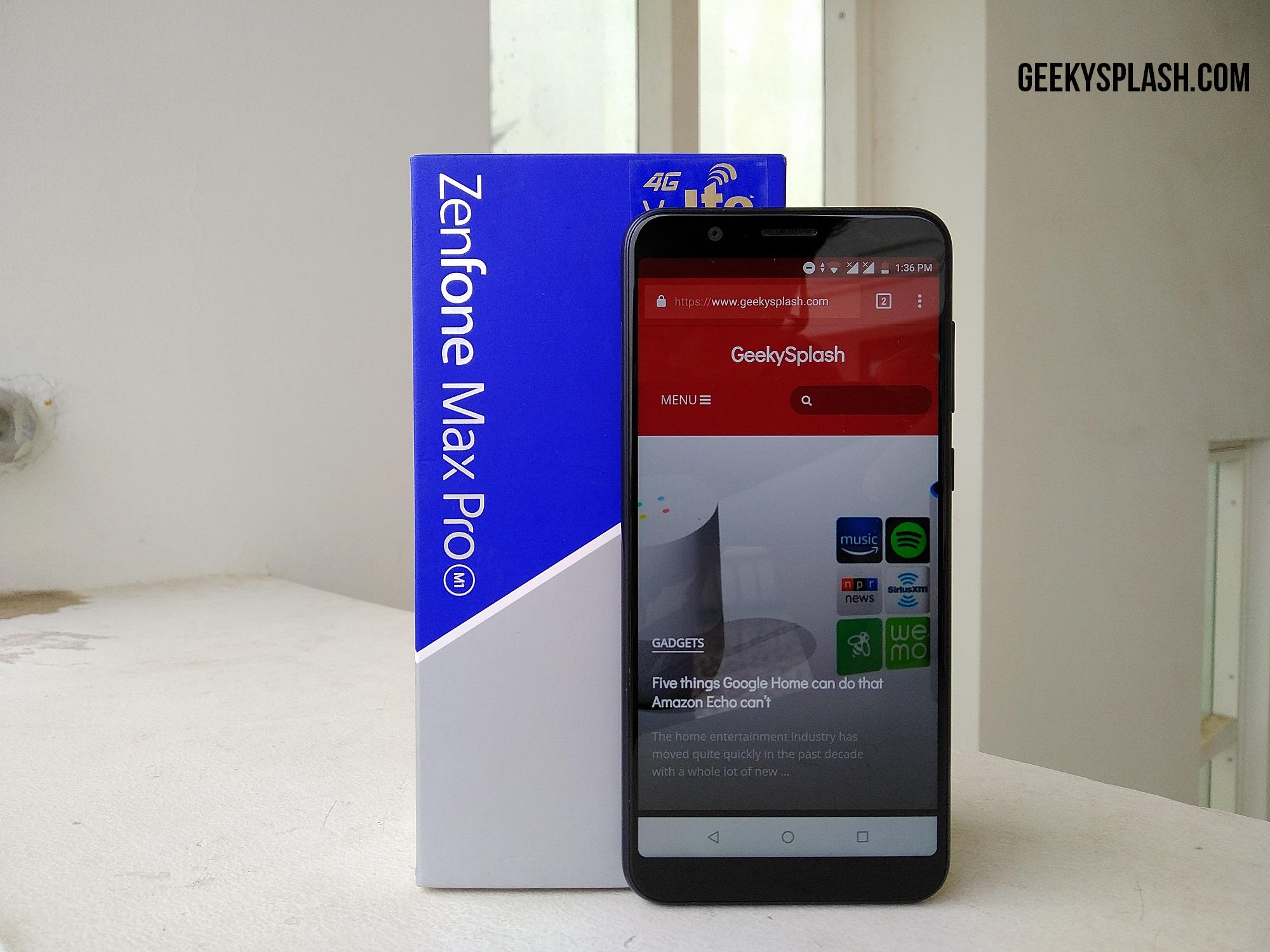
Loading…